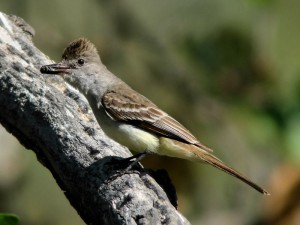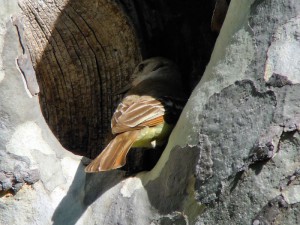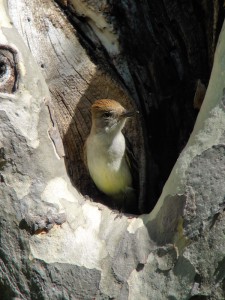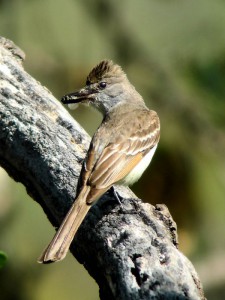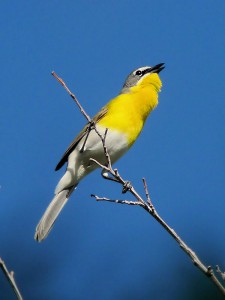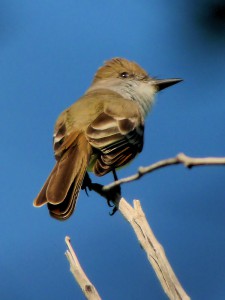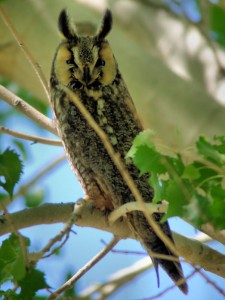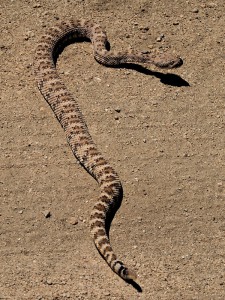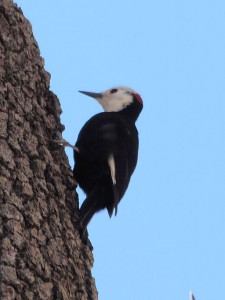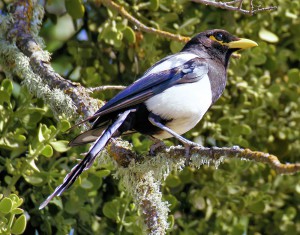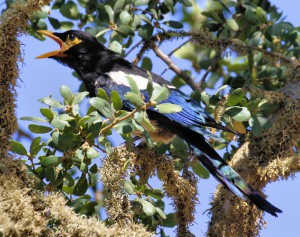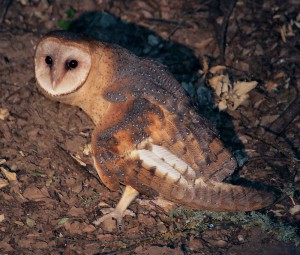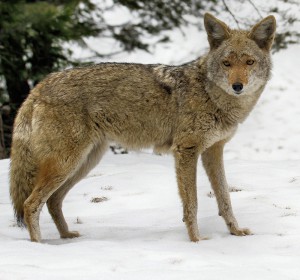During a recent Cactus Wren survey at the Starr Ranch National Audubon Sanctuary, I found a pair of Ash-throated Flycatchers. The Ash-throated Flycatcher, Myiarchus cinerascens, is a common breeding species here in Orange County. Ash-throats typically inhabit the open woodlands at the edge of scrub-land and the partially-wooded suburban areas. Ash-throats reach up to 8.5 inches in length, making them fairly large flycatchers. Flycatchers of this genus are particularly handsome, with reddish webbing in the outer wing and tail feathers. A yellowish wash to the belly and gray throats contrast with the brown back, cheek and crown. Like many flycatchers, they have a crest that they can raise or lower at will. This gives them sort of a punk look, as in this shot.
At the Nest
Ash-throated Flycatchers are cavity nesters. They require a nest hole, either natural, like a woodpecker hole or artificial, like a nest box. This pair used a hole in a massive old sycamore, which formed where a large branch broke off. This cavity was so deep that when the parent birds fed their young, they disappeared entirely in the hole. Typically, the birds were quite conspicuous, hunting and perching on exposed branches and vocalizing frequently with their loud “chi-beeer!” calls. They were often surprisingly unsubtle about the location of their nest. They flew in without hesitation and disappeared deep in the tree, only to reappear seconds later.
These parents were quite attentive to their young. They foraged rather successfully, as attested by the spider and unknown insect in their beaks. They were quite rude, frequently talking with their mouths full! But they were also cooperative, frequently posing on nearby perches and enabling photography.
Range
Ash-throated Flycatchers breed in Orange County, the only members of this genus that do so. Here, any other flycatcher in this genus is only visiting. That said, at least four other Myiarchus flycatchers show up in the county, including Dusky-capped, Brown-crested, Great-crested, and in winter of 2000, a Nutting’s Flycatcher. Of these, only the Great-crested Flycatcher doesn’t breed relatively nearby. Ash-throated Flycatchers are migratory, appearing between mid-March and the end of May and departing, from mid-August through September. Ash-throats over-winter in Orange County fairly regularly but are never common. Wintering birds average about one per year, according to “The Birds of Orange County California – Status and Distribution”.
Digiscoping
These pictures were taken with the Leica digiscoping rig comprised of the D-Lux4 digital camera attached to the Apo-Televid 82 scope with the D-Lux4 digiscoping-adaptor. One issue with digiscoping is that it takes longer to deploy than a regular camera set-up. Still, the high magnification of the Televid scope and great resolution of the D-Lux4 camera make for some good pictures. I snapped off perhaps 20 shots of these birds in the space of a few minutes. While not all were of publication quality, only one wasn’t in sharp focus. With the camera set on aperture priority, the exposures were pretty much spot-on every time. I’m not a great photographer, but this rig allows me to fake it pretty well! And with spectacular and willing subjects like these gorgeous Ash-throated Flycatchers, it’s pretty hard to go wrong.

